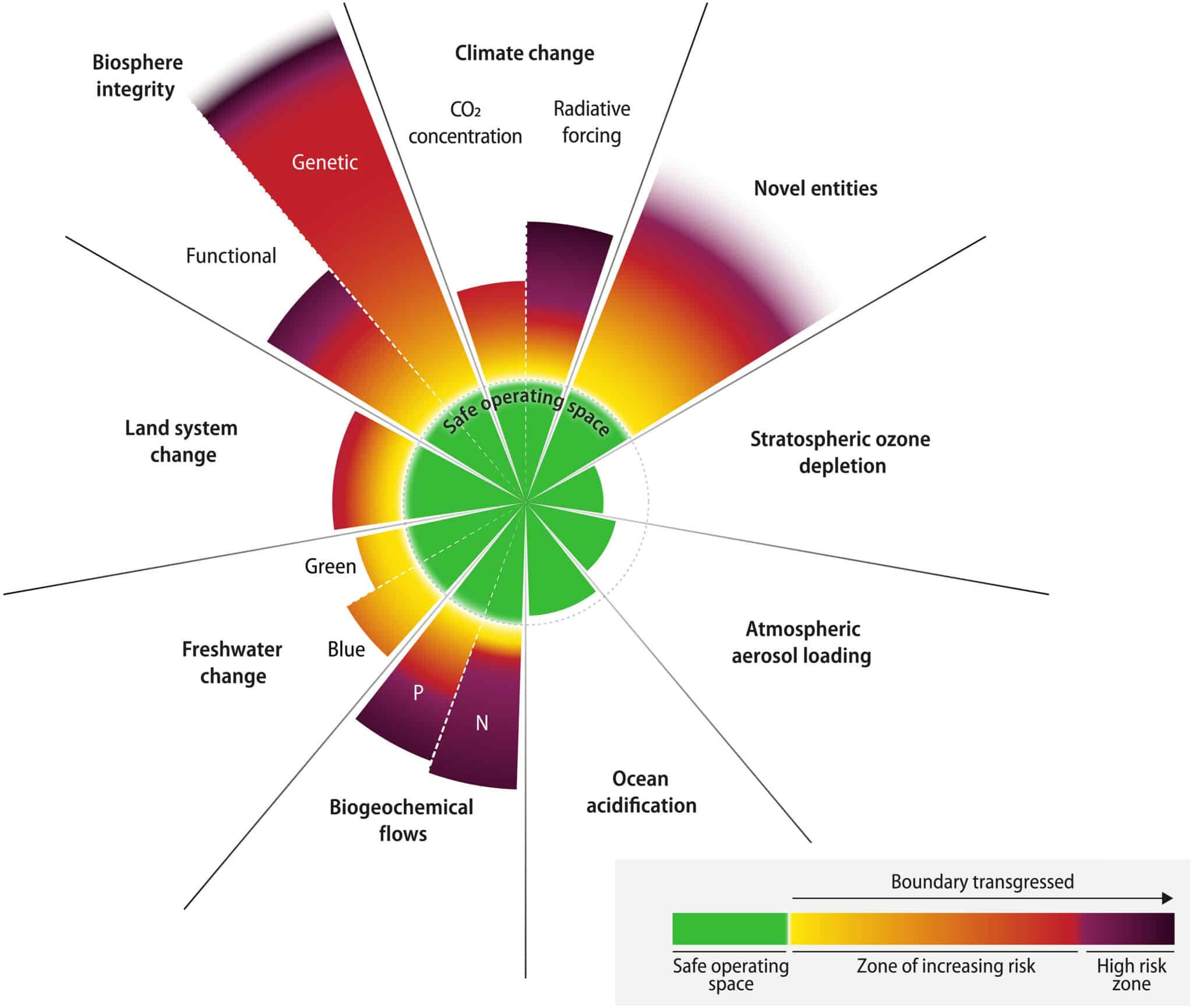Dwindling resilience brings the planet ever closer to catastrophic tipping points
The Planetary Boundaries framework, first published in 2009, has been fully updated and mapped for the first time. The results show that six of the nine global environmental boundaries have definitely been passed, and one, ocean acidification, is very close to its boundary. Only ozone depletion and atmospheric aerosols are clearly in the safe operating space.
The 2023 update to the Planetary Boundaries framework. Click for larger image. The green zone is the safe operating space. Yellow to red represents the zone of increasing risk. Purple indicates the high-risk zone where there is high confidence that Holocene conditions have been transgressed, reflecting unprecedented human disruption of the Earth System.
While transgressing a boundary is not equivalent to drastic changes happening overnight, together they mark a critical threshold for increasing risks to the stability of the Earth System, and the maintenance of the only environmental conditions in which we know for certain that human civilization can thrive.
As co-author and Centre researcher Johan Rockström says,
“We don’t know how long we can keep transgressing these key boundaries before combined pressures lead to irreversible change and harm.”
The update, published in the journal Science Advances, explains that each boundary defines a global ecological process that is “critical for maintaining the stability and resilience of Earth system as a whole.” If the nine boundaries were respected, the Earth could remain in the relatively stable and warm planetary conditions that prevailed for the past 12,000 years, when all human civilizations developed. Instead, that period, known as the Holocene, is giving way to “a state without analog in human history,” the Anthropocene epoch.
“Boundary positions do not demarcate or predict singular threshold shifts in Earth system state. They are placed at a level where the available evidence suggests that further perturbation of the individual process could potentially lead to systemic planetary change by altering and fundamentally reshaping the dynamics and spatiotemporal patterns of geosphere-biosphere interactions and their feedbacks. …
“Currently, anthropogenic perturbations of the global environment are primarily addressed as if they were separate issues, e.g., climate change, biodiversity loss, or pollution. This approach, however, ignores these perturbations’ nonlinear interactions and resulting aggregate effects on the overall state of Earth system. Planetary boundaries bring a scientific understanding of anthropogenic global environmental impacts into a framework that calls for considering the state of Earth system as a whole.”
Rockström says that the authors of the report are deeply concerned about the extreme climate events hitting societies across the planet this year.
“But what worries us, even more, is the rising signs of dwindling planetary resilience, manifested by the breaching of planetary boundaries, which brings us closer to tipping points, and closes the window to having any chance of holding the 1.5°C planetary climate boundary.”
For full information on how the updated Planetary Boundaries are defined and measured, and what the effects of transgressing them can be, see Katherine Richardson et al, “Earth beyond six of nine planetary boundaries,” Science Advances, September 13, 2023 (pdf)







